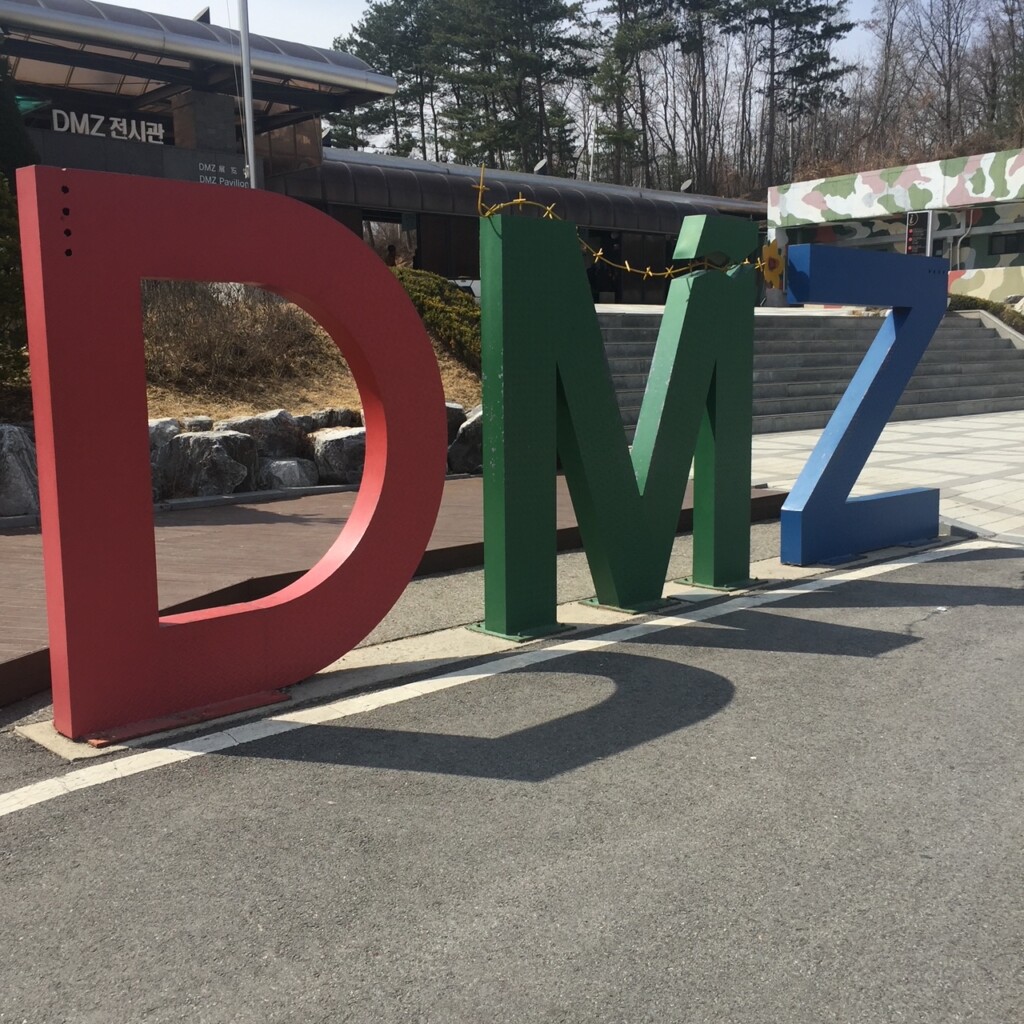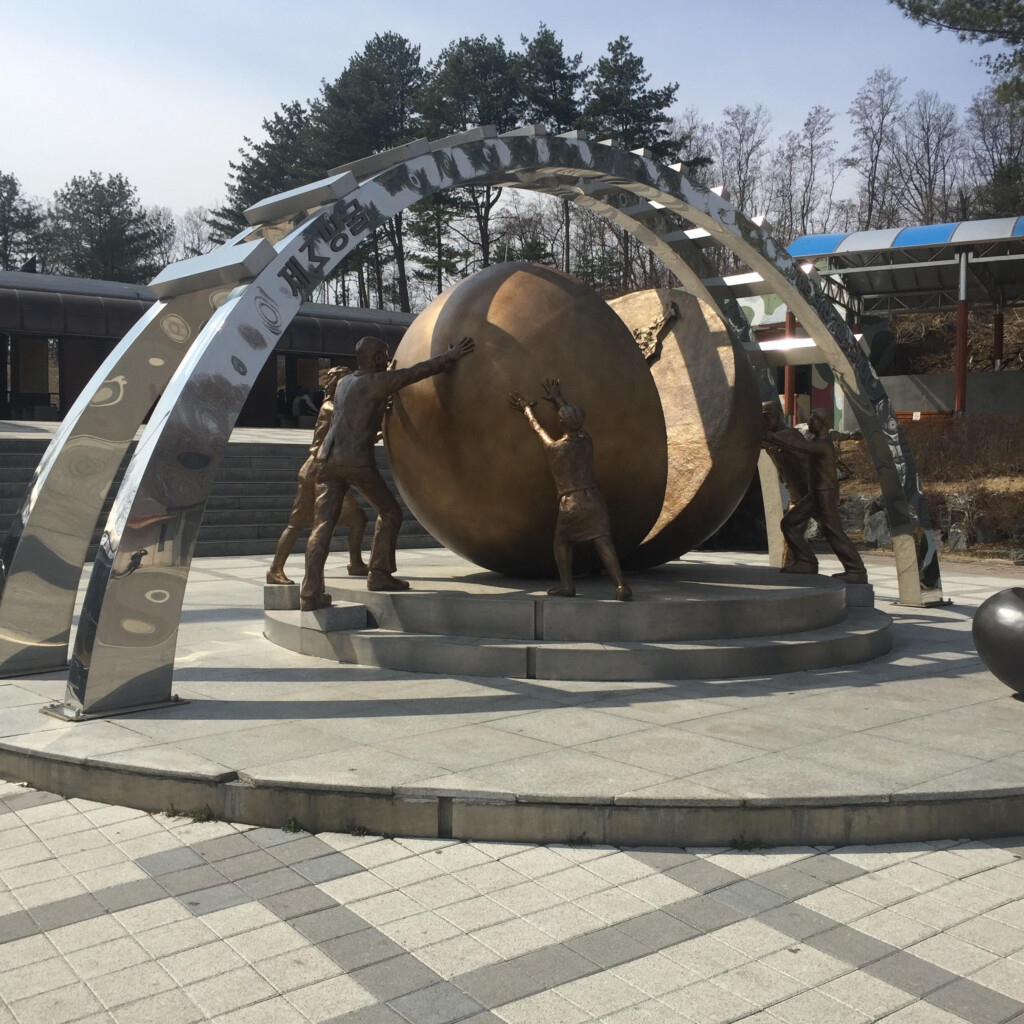A Journey to the DMZ
Visiting North Korea isn’t your typical vacation destination, but we went there—or at least, as close as you can get without sparking an international incident. This is the story of our visit to the Korean Demilitarized Zone (DMZ), the most heavily fortified border in the world. One minute we were in South Korea, and the next, we were standing just a few feet into North Korea. Crazy, right?
The Most Intense Border on the Planet
The DMZ is an eerie place. It’s a strip of land that splits the Korean Peninsula along the 38th parallel, a place you’ve likely seen on the news a time or two. The tension here is palpable, and the history is as thick as the humid summer air. This is the place where President Trump made history by stepping over the border in 2019, the first U.S. president to do so. It’s also the site of one of the most brutal events in U.S.-North Korean history: the 1976 axe murder incident, where two American officers were killed by North Korean soldiers. The history here is heavy, and the atmosphere is tense.
The Joint Security Area and those Blue Buildings
Before we start. To go to the DMZ, you need to be a part of a tour. They will not let you in on your own!
Our journey began with an anxious bus ride early on St. Patrick’s Day, surrounded by dozens of other curious tourists. We were all headed to the Joint Security Area (JSA), the only place along the DMZ where North and South Korean forces stand face to face. The JSA, also known as the Truce Village or Panmunjom, is a surreal spot. Here, you’re in a room with armed soldiers, literally on the world’s most intense border. It’s an uneasy feeling, knowing that one wrong move could escalate into a major incident.

We were briefed by an army officer on what to do and, more importantly, what not to do. The instructions were clear: no startling gestures, no sudden movements. As we stood in the room where the Korean War armistice was signed in 1953, we couldn’t help but feel the weight of history. This war technically never ended; it’s a frozen conflict, with both sides still technically at war.
Inside the blue buildings, we stepped a few feet into North Korea. Look, it’s not fully visiting a country, but it’s a helluva way to cross a border. The room filled with soldiers from South Korea(Republic of Korea) and a number of tourists like us, made for quite the company. Given everything we were briefed on, this was pretty crazy.
NOTE: The JSA closed for tourists in July 2023, due to tensions with North Korea. Please keep an eye on if things change if this is a vital part of your choice to take this tour.
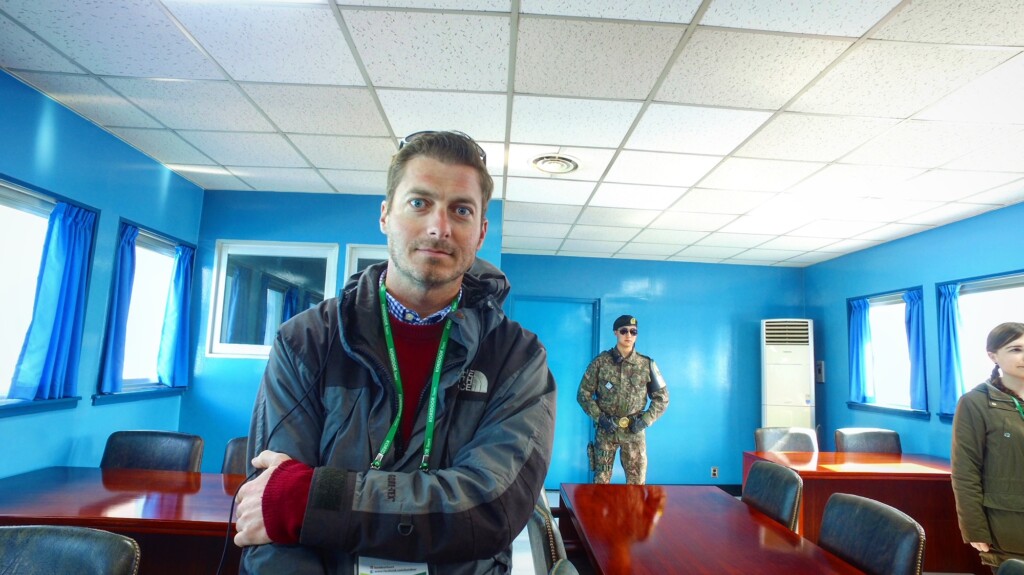
The Museum and the Axe Murder Incident
Next, we visited the JSA museum, which offers a chilling look at the history of this area. The museum recounts the events of August 18, 1976, when two American officers, Captain Arthur Bonifas and First Lieutenant Mark Barrett, were brutally murdered by North Korean soldiers. This incident, known as the axe murder incident, nearly escalated into a full-blown war. The museum also documents a more recent event: the 2017 defection of a North Korean soldier who ran across the border, under fire from his own comrades. These stories bring into focus the dangers of this place.

The DMZ Gift Shop and Dark Tourism
As strange as it might sound, there’s a gift shop here, too. It offers mementos of the conflict, a bizarre yet fascinating way to remember your visit. The rise of dark tourism, where thrill-seekers visit dangerous or historically significant sites, has brought more visitors to the DMZ. It’s a place that’s both fascinating and terrifying, a symbol of division and the ever-present threat of conflict.
Dorasan Station: The Train Station to Nowhere
Our next stop was Dorasan Station, a symbol of hope and the unfulfilled dream of Korean reunification. This modern, beautiful train station was built to connect North and South Korea. For a brief period, freight trains traveled daily into North Korea. But in 2008, the border closed, and now the station sits mostly empty, a haunting reminder of what could have been. Signs even still adorn the station for trains between Pyeongyang and Seoul.
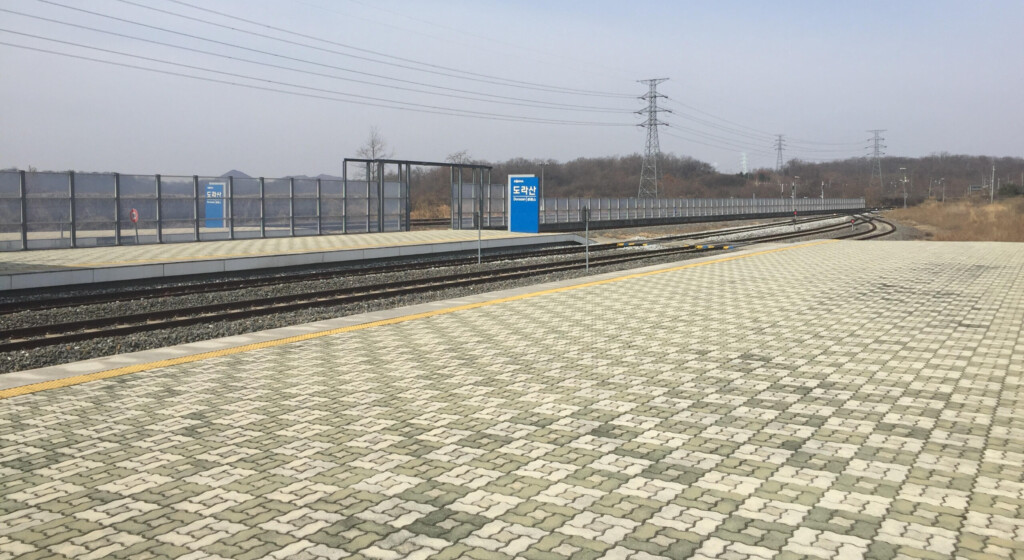
The Dora Observatory: A Glimpse into North Korea
Our final stop was the Dora Observatory, where we got our first glimpse into North Korea. Through high-powered binoculars, we could see the propaganda village of Kijong-dong. The North Korean government claims that 200 families live there, but in reality, it’s an uninhabited town, a Potemkin village built to encourage South Koreans to defect. The 525-foot flagpole, one of the tallest in the world, proudly displays the North Korean flag. It’s a strange, surreal sight, accompanied by the eerie sound of propaganda music and anti-Western speeches blaring from loudspeakers.
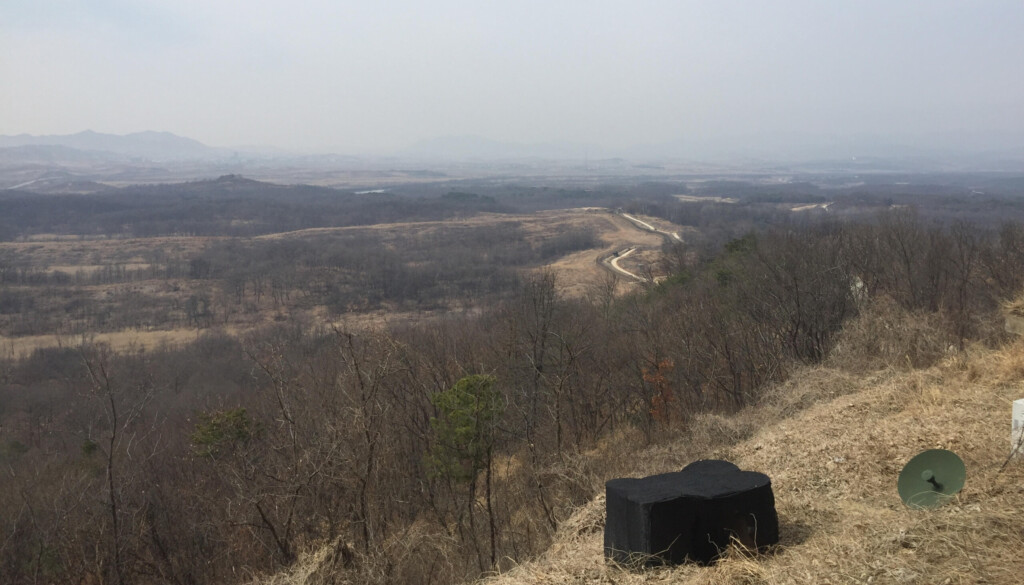
Is the DMZ the Scariest Place on Earth?
So, is this the scariest place on earth? It certainly has its moments. The bus ride up was filled with anticipation, and the history we learned at the museum was harrowing. But standing there, looking across the DMZ into North Korea, we couldn’t help but feel a strange sense of calm. The DMZ is a place of stark contrasts: a symbol of division and hope, a place of history and ongoing tension.
As we left the DMZ, we reflected on the bizarre mix of emotions we felt. This place, with its dark history and uncertain future, has a strange way of bringing people together. Even if it’s just to snap a photo in front of those big, Instagram-worthy DMZ letters, it’s a reminder of how travel can take us to the most unexpected places.
